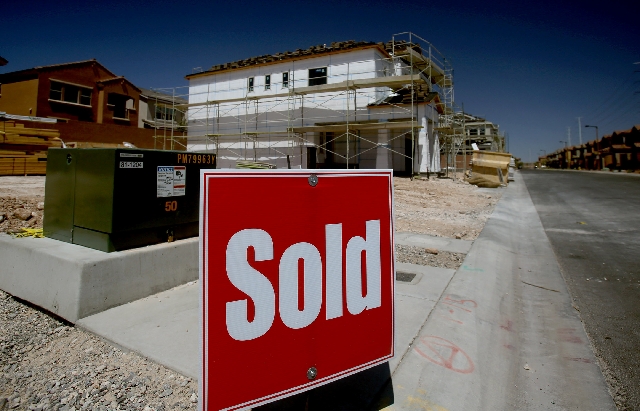Las Vegas dirt: Expensive, limited and hard to find
Southern Nevada home builders say they need land.
And while more dirt may be on its way to market, the parcels they’ll get may not be in sizes or prices that make economic sense for housing development, according to a panel of industry experts at Thursday’s monthly luncheon of the Southern Nevada Home Builders Association.
Take KB Home, one of the market’s biggest builders.
Panelist Elizabeth Parker, KB Home’s local director of land acquisition and strategic planning, put her corporate checkbook on ice for the recession, as did most builders. Now, with the market thawing, it’s time to begin buying again.
“We need to make up for lost time. We want to be able to continue not only at the rate we’re going today, but to grow. We’re being very aggressive to maintain our position in the market,” Parker said.
It’s not easy, though. Things just aren’t what they were before the recession, said panelist Curtis Allsop, director of the land group at commercial brokerage Newmark Grubb Knight Frank. Builders are cobbling together 5-acre plots, instead of the 40-acre tracts that reigned before the recession. It’s almost impossible to find anything bigger than 20 acres these days, Parker added. That’s a problem because infrastructure is pricey, and it makes less economic sense to improve a parcel with few lots.
That could change by the end of this year.
Panelist Bob Ross, Las Vegas field manager for the Bureau of Land Management, said the agency plans to put 133 acres on the auction block in late spring or early summer, and another 440 acres in the fall. Those numbers are up considerably from the 12.5 acres the BLM sold in January, though not even close to the 1,710 acres it sold for master-planned development in February 2005.
“It’s hard to say it’s a trend, but it’s looking better than it did,” Ross said.
There’s also plenty of land left for development. Ross said the BLM counts 30,000 acres it could auction in the valley, and another 110,000 acres outside the metro area.
But wait, there’s more, and it involves the 5,000-acre common management area west of McCarran International Airport.
Because of noise concerns, building in the management area has been restricted mostly to nonresidential uses. That’s changing: Modern, quieter jets could open hundreds of acres for housing, said panelist Randy Walker, director of the Clark County Department of Aviation. The department hasn’t crunched specific numbers to determine available acreage, but Walker said the property is concentrated in southwest Las Vegas around the Las Vegas Beltway between Rainbow Boulevard and Russell Road, where the beltway curves north.
Yet, even as the land crunch shows signs of easing, prices are making builders and developers nervous. As KB and other builders and investors jump back into the market, the cost of dirt is spiraling quickly. Land sold for an average of $174,000 per acre in the fourth quarter, up 70 percent from $102,500 in the fourth quarter of 2011, according to the research firm Applied Analysis. The company is still crunching its first-quarter statistics, but prices may have risen considerably more in recent months.
Parker said those kinds of trends spur talk among KB officials about whether they’re overpaying for land.
“We’re very uncomfortable. We have two separate things going on at the same time. We have a business that is becoming more and more profitable, and growing more and more, and we need to sustain that. On the other hand, the land market has become pretty crazy,” she said. “We look at pro formas, home prices, costs and the bottom line, and it’s not quite what we would like. It’s a little uneasy not to have that cushion.”
Contact reporter Jennifer Robison at jrobison@reviewjournal .com or 702-380-4512. Follow @J_Robison1 on Twitter.

















